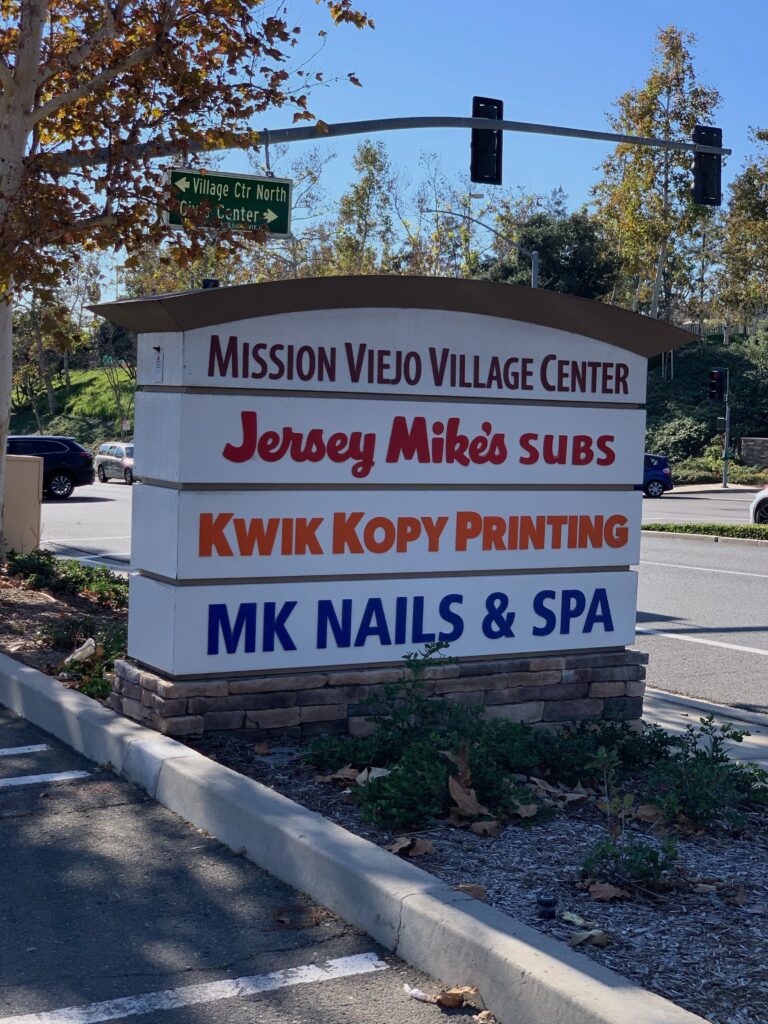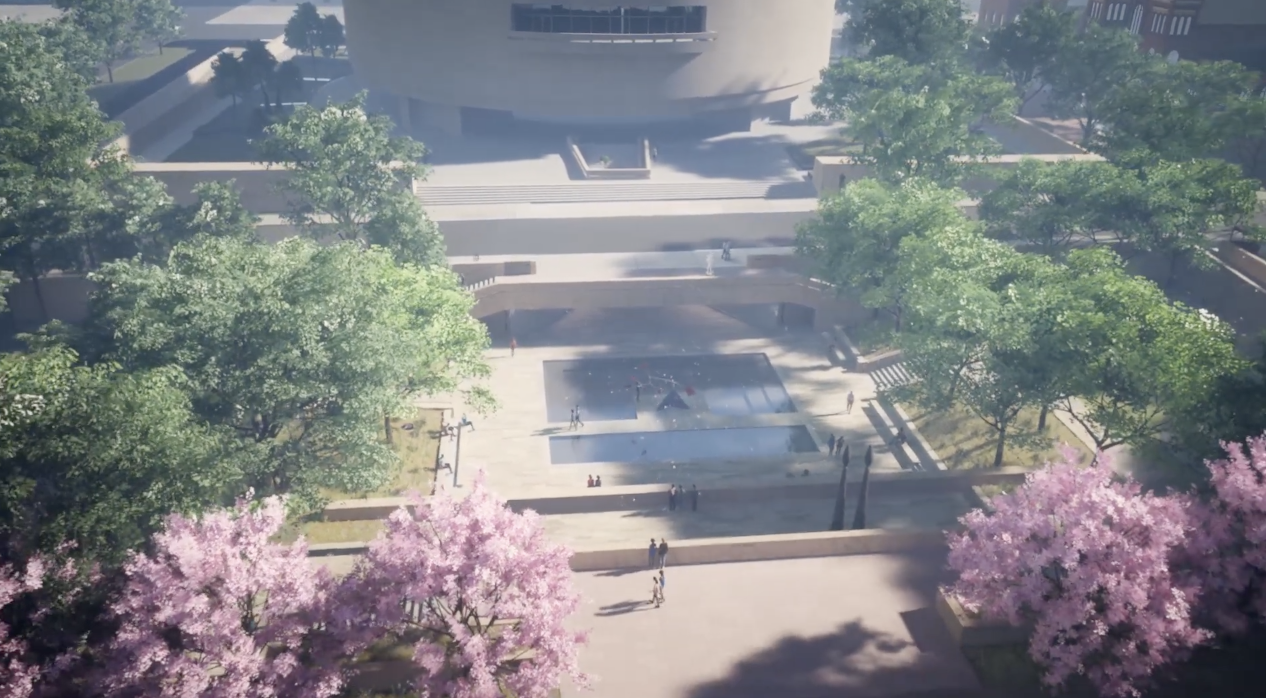(WASHINGTON)—Imagine the city of Mission Viejo in the summer of 1966 as it begins to emerge from the sleepy ranch land between Los Angeles and San Diego. A planned community designed for comfort, the Southern California sun glinting off the fresh paint of its newly-built homes.
The city’s founders promised a refined standard of modern living. “The story of Mission Viejo is the story of man’s search for a better way of life. It is the story of a plan—a plan that reached reality, a plan that works,” declared a marketing film at the time.
A 1967 film by R.D. Robinson and Alan Stecker promotes the new city of Mission Viejo, Calif. [Credit: Mission Viejo Library and Mission Viejo Heritage Committee]
Urban planner James Toepfer, who created the city’s master plan over 18 months, imagined a community of 80,000 that—along with homes and schools— would also feature a golf course, country club, recreation centers, parks, and riding stables, according to a January 1966 issue of the “Mission Viejo Reporter” and a city timeline.
At the center of Toepfer’s vision was a bustling downtown of sprawling shopping plazas—an economic hub to serve Mission Viejo’s first residents and sustain the city in the decades to come.
Half a century later, the city of Mission Viejo prospers, but the shopping plazas remain frozen in the 70s: Dilapidated strip malls with vacant stores and a handful of shoppers.
The fate of the Mission Viejo Village Center, a shopping plaza across the street from city hall, has ignited a fierce debate among city council members and business owners about the efficacy of spending nearly $50 million to renovate what some residents consider an eyesore, or whether the city should redirect those funds toward other causes.
![The Mission Viejo Village Center has become a spot of controversy as the city council and business owners debate its future. [Credit: Pooja Shah] A sign reading "Village Center" with the names of shops below](https://theclick.news/wp-content/uploads/cache/2021/12/Village-Center--scaled/2675320371.jpg)
![The Shirt Cannery opened in Mission Viejo over 40 years ago. Owner Julie Marshall has seen little change since then. [Credit Pooja Shah] A sign in the Village Center plaza reads "The Shirt Cannery" in red](https://theclick.news/wp-content/uploads/cache/2021/12/Shirt-Cannery-scaled/904803725.jpg)
The outcome will determine the future of Mission Viejo’s downtown.
Julie Marshall, who owns The Shirt Cannery, which opened in the Village Center over 40 years ago. She has seen little change since then.
“This is supposed to be the hub of Mission Viejo, and it’s one of the oldest shopping centers,” she said. “[A]ll the other centers around us are getting a little update or cleanup. This center hasn’t been touched in the whole time I’ve been here.”
A city planned for success
Like the Village Center, much of the city’s style and design have not changed in decades, city council member Brian Goodell said. “All the cities around us are doing things to enhance their downtowns,” he added. “We have to [be] flexible and adjust and come into the 2020s instead of the 1970s.”
The idea for Mission Viejo came from three men—Donald Bren, Philip J. Reilly, and Toepfer. In 1963, they purchased 10,000 acres of the O’Neill family’s 53,000-acre ranch, according to a city timeline.
The city’s previous occupants were a few hundred head of cattle, a herd of sheep, and the ranchers who cared for them. “It was bare land, with hardly any trees, almost every tree you see in Mission Viejo was planted,” said Robert “Bob” Bunyan, a former city planner for the Mission Viejo Company who worked on the city’s early development and has presented on its history.
The city found instant success.
When the initial residential properties went on the market, 50 to 60 families arrived three days early to wait outside the sales office, observed the “Mission Viejo Reporter” in a July 1966 issue.
Mission Viejo’s downtown came to life a few months later when the first shopping plaza opened with a supermarket, pharmacy, bank, dry cleaner, and a doctor’s office among the early businesses. For the city’s new residents, the plaza’s opening marked “the culmination of a vigil during which they had been required to travel miles for a head of lettuce, a bottle of aspirin or whatever they belatedly discovered they needed,” proclaimed the “Mission Viejo Reporter” in April 1967.
But times have changed.
The $50 million plan for a ‘walkable village’
Today, the Village Center’s empty parking lot and vacant storefronts have led the city council to embark on an ambitious development plan to update Mission Viejo’s facade and reinvigorate its economic center.
For Goodell, the Village Center is “an old strip mall that needs some renovation.” However, the empty buildings are difficult to lease, and multiple property owners in the plaza without a single manager have made it impossible to coordinate large-scale renovations, he added.
“There’s 13 different owners, so one owner doesn’t want to spend a bunch of money and a lot of these places are in trust[s] so they get handed down to their kids and their grandkids and they don’t care because they’re getting the money, and they don’t want to spend money to make it better,” Marshall said.
In March 2017, the council approved a 182-page Core Area Vision Plan that provides “a framework for open space” by connecting the nearby Oso Creek trail to the Village Center grounds.
“Envision the Possibilities” showcases the goals of the Core Area Vision Plan [Credit: City of Mission Viejo]
The effort carries a hefty price tag of $50 million.
To pay for it, the city plans to issue $46 million in municipal bonds to purchase the site of the Village Center’s vacant Stein Mart property and aims to create a “walkable village” with restaurants, shops, and cultural activities, according to a website devoted to the project and a news article on the city’s website.
Council members are not alone in their desire to renovate the plaza. Resident input shaped the final proposal.
To engage with the community and solicit feedback, plan sponsors held two pop-up events in June 2016, which included opportunities to meet the project team and art projects where participants drew or wrote their vision for the city’s downtown, according to the plan. The project sponsors also conducted a city-wide survey with questions around land use, economic development, revitalization, and the types of ideal businesses and amenities in the area. About 62% of those surveyed agreed that some of the city’s shopping areas “are outdated and in need of revitalization” and 74% “support[ed] the City playing an active role in the revitalization process.”
Not everyone agrees.
One property owner in Village Center has insisted that the vision plan would violate existing covenants, conditions, and restrictions (CC&R).
Eric Cernick argued that the plan would contradict the restrictions that a 2015 California lawsuit upheld as valid. That case prevented one property owner from developing a new building in the plaza’s parking lot, according to “Voice of OC.”
Cernick promised to enforce the CC&Rs even if it means obstructing the Vision Plan, as he told the city council during a Sept. 14 meeting. “[W]elcome to the Village Center, we’ll be good neighbors as long as you guys follow the CC&Rs. I’ve always been told you guys don’t recognize them, but as property owners, you sure will,” he said.
Other residents, like Anthony Elia, believe the council should invest in building technical schools to train plumbers, electricians, heating and air conditioning technicians, and carpenters.
“The need to create real jobs with a good income and the potential for a long career for our young people is very real,” Elia said at the council meeting. “Government should support the private sector, not attempt to engineer changes based on a five-year-old, out-of-date study. When I heard that you wanted to create a mini-mall out of this building, I nearly fell off of my chair.”
Still, the city council forged ahead with its plans. In September, the council authorized funds to purchase the Stein Mart site for $11.9 million and granted an additional $300,000 for contractors to assess and develop the site, according to the meeting agenda.
Yet the city’s role as a developer does not come naturally. “I think everything is a challenge for the city. But we have to be leaders to start the ball rolling,” Goodell said.
Mission Viejo’s role in the 2020s
Ultimately, the Core Vision Plan’s achievements will depend on what form the project takes, and those decisions—whether to keep or tear down the Stein Mart building, the retail stores and restaurants to include, and how the new space interacts with the rest of the plaza—will play out over the next several years.
But the project raises larger questions— how to allocate resources, how to build community, and how and whether to revitalize a master-planned city—which remain salient for all of Mission Viejo as it turns half a century old.
Five decades ago, “planned communities really hit the spot, they were a home run,” Bunyan said. However, “a planned community does not have a lot of flexibility in changing” which makes it difficult to adjust for shifting factors like affordability and demographics, Bunyan said. “There’s a place for everything, and maybe the master-planned community is destined to continue to be what it is. It’s one of those questions that you find the urban planners and the architects and the designers constantly exploring.”
As Goodell put it, at its heart, the Vision Plan is about “making Mission Viejo a place where people want to come and hang out and eat and drink and be merry.”
That is the same vision its founders shared when only cattle roamed the rolling hills.

![The Core Area Vision Plan seeks to connect the Oso Creek Trail with the Village Center shopping plaza. [Credit Paras Shah] A sign reads "Oso Creek Trail" with a blue sky and trees in the background](https://theclick.news/wp-content/uploads/cache/2021/12/Oso-Creek-Trail-scaled/2888609098.jpg)
![The City of Mission Viejo plans to purchase the vacant Stein Mart building off Marguerite Parkway for $11.9 million. [Credit: Paras Shah] An empty parking lot and the Stein Mart store in the distance.](https://theclick.news/wp-content/uploads/cache/2021/12/Local-News/984781903.jpg)

